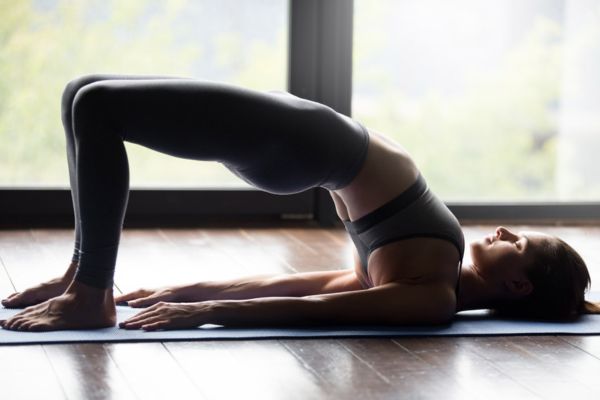Terms like “yoga postures” and “mobility exercises” are often used interchangeably, leading to confusion about their distinct purposes and practices. While both yoga postures and mobility exercises aim to improve flexibility, range of motion, and overall physical function, they are inherently different in their approaches and methodologies. Understanding these differences is essential for selecting the most suitable practices to meet individual goals and needs. Let’s delve into the nuances of yoga postures and mobility exercises to decipher their similarities, differences, and how to determine which to follow.
Yoga Postures:
Yoga, an ancient practice originating in India, encompasses a holistic approach to physical, mental, and spiritual well-being. Yoga postures, also known as “asanas,” are a central component of this practice, focusing on the integration of breath, movement, and mindfulness. Each yoga posture is designed to target specific muscle groups, joints, and energy centers in the body, promoting balance, strength, flexibility, and inner awareness.
The practice of yoga postures emphasizes alignment, stability, and mindfulness, encouraging practitioners to move with intention and presence. Yoga sequences often incorporate a variety of postures, ranging from standing poses to seated stretches to inversions and beyond, allowing for a comprehensive exploration of the body’s capabilities and limitations.

Benefits of Yoga Postures:
- Improved Flexibility: Yoga postures gently stretch and lengthen muscles, tendons, and ligaments, enhancing overall flexibility and range of motion.
- Enhanced Strength: Many yoga postures require engaging and stabilizing various muscle groups, leading to improved strength and muscular endurance.
- Stress Reduction: The combination of breath awareness, movement, and mindfulness in yoga postures promotes relaxation and reduces stress levels, benefiting both physical and mental well-being.
- Mind-Body Connection: Practicing yoga postures cultivates a deeper connection between the mind and body, fostering self-awareness, self-acceptance, and inner peace.
Mobility Exercises:
Mobility exercises, on the other hand, focus specifically on improving joint mobility, range of motion, and functional movement patterns. Unlike yoga postures, which often involve holding static poses for an extended period, mobility exercises typically involve dynamic movements that target specific joints and movement patterns.
Mobility exercises may include techniques such as joint rotations, dynamic stretches, foam rolling, and proprioceptive neuromuscular facilitation (PNF) stretching. These exercises aim to increase joint mobility, reduce stiffness, and improve overall movement quality, making them particularly beneficial for athletes, fitness enthusiasts, and individuals recovering from injuries.

Benefits of Mobility Exercises:
- Increased Joint Mobility: Mobility exercises target specific joints and movement patterns, helping to improve flexibility, range of motion, and joint function.
- Injury Prevention: By addressing mobility limitations and movement imbalances, mobility exercises can help prevent injuries and enhance physical performance in sports and activities of daily living.
- Enhanced Movement Quality: Improving joint mobility and movement patterns through mobility exercises can enhance overall movement quality, coordination, and proprioception.
- Functional Fitness: Many mobility exercises mimic real-life movement patterns, making them highly applicable to activities of daily living and functional fitness goals.
Determining What to Follow?
When deciding whether to focus on yoga postures or mobility exercises, it’s essential to consider individual goals, preferences, and physical abilities. For those seeking a holistic approach to health and well-being, yoga postures offer a comprehensive practice that addresses physical, mental, and spiritual aspects of wellness. Yoga postures are particularly beneficial for promoting relaxation, stress reduction, and mind-body awareness.
On the other hand, if the primary goal is to improve joint mobility, range of motion, and movement quality, mobility exercises may be more appropriate. Mobility exercises can be tailored to target specific areas of the body or address individual movement limitations, making them highly effective for addressing mobility-related issues and enhancing physical performance.
In many cases, a combination of yoga postures and mobility exercises may be the most beneficial approach. Integrating both practices into a well-rounded fitness routine can provide the benefits of improved flexibility, joint mobility, strength, and overall physical function. Additionally, listening to the body and honoring its needs and limitations is essential in determining which practices to follow and how to adapt them to individual circumstances.

Summary
While yoga postures and mobility exercises share the common goal of improving flexibility, range of motion, and physical function, they differ in their approaches, methodologies, and intended outcomes. Yoga postures emphasize alignment, stability, and mindfulness, promoting holistic well-being and self-awareness. Mobility exercises, on the other hand, focus specifically on improving joint mobility, movement patterns, and functional fitness.
Ultimately, the choice between yoga postures and mobility exercises depends on individual goals, preferences, and physical abilities. Whether seeking relaxation, stress reduction, and mind-body awareness through yoga postures or aiming to improve joint mobility, range of motion, and movement quality through mobility exercises, both practices offer valuable tools and techniques for enhancing overall health and well-being. By exploring the similarities and differences between yoga postures and mobility exercises, individuals can make informed decisions about which practices to incorporate into their fitness routines to optimize physical, mental, and emotional health.
